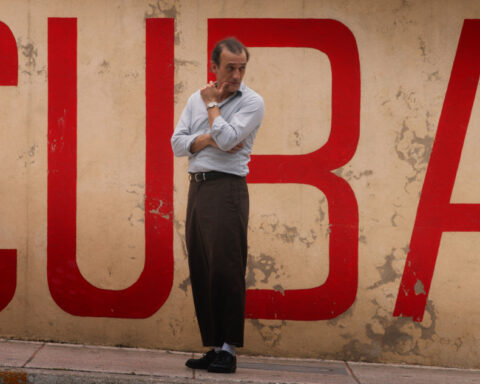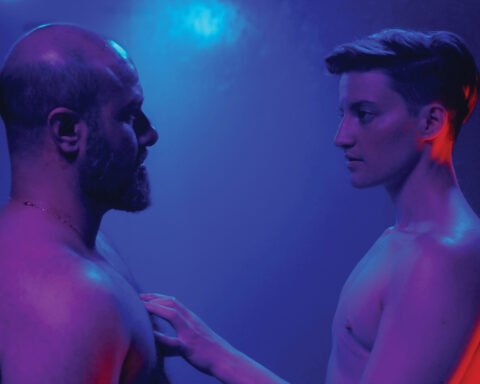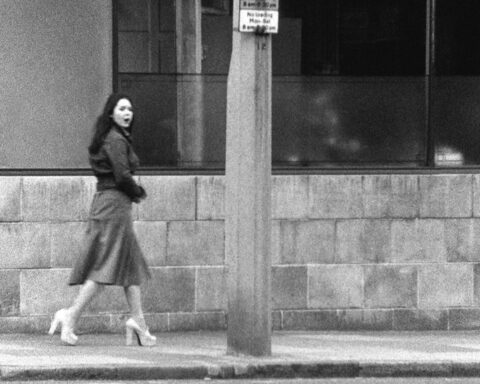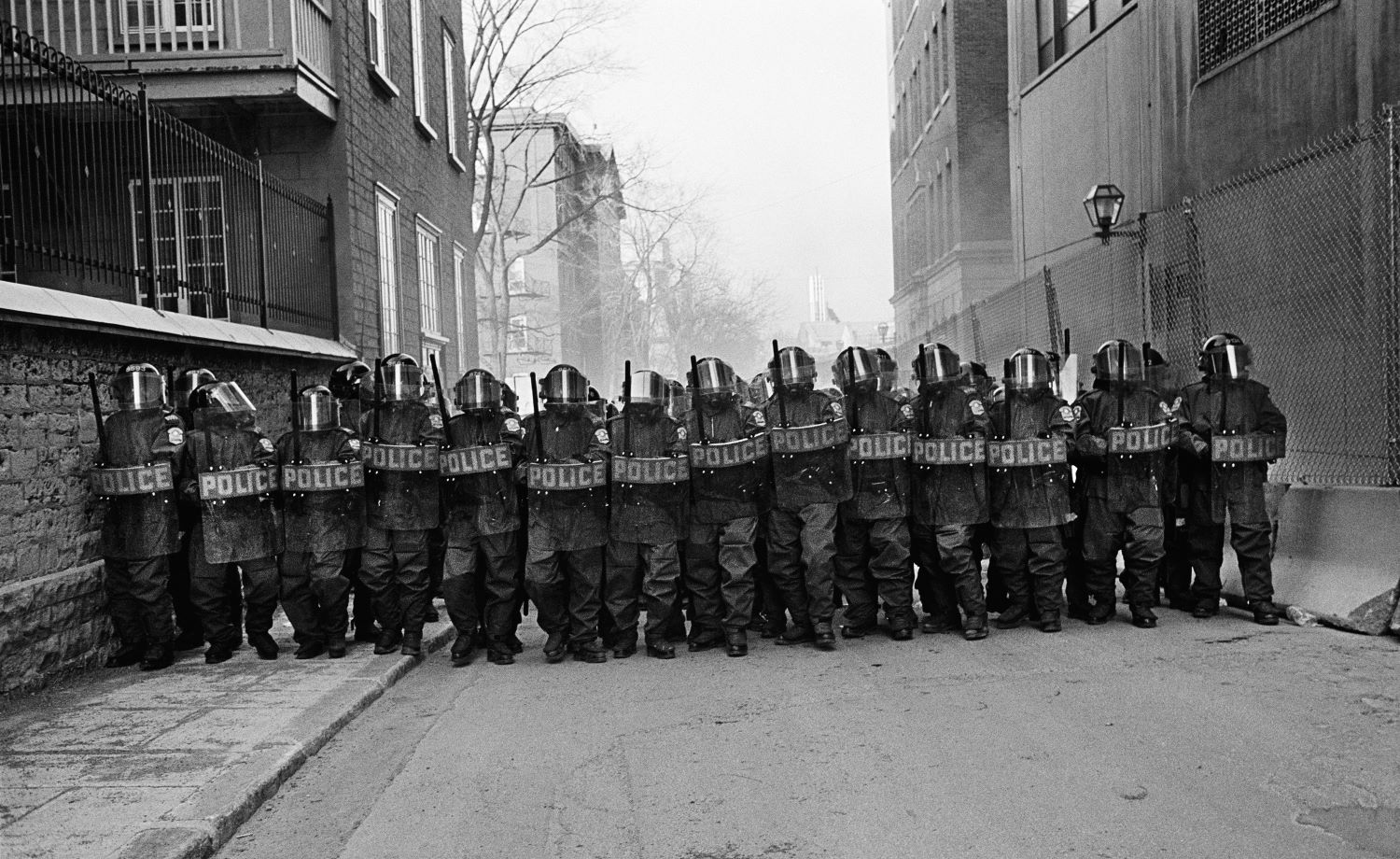Perhaps as expected many of my early memories are obscured by a hazy patina. Some of them I recall not as dynamic or even sensational, and they exist rather as a simple static image. One: a gauzy light veils a summer picnic; I’m still in diapers. It was not until I became somewhat older and was leafing through a family photo album that I understood, to my bafflement, that many of those oldest memories weren’t at all my recollection of the events themselves. Instead, these were memories I had constructed posthoc, ones that were informed by and built around photographs. In my mind’s recollected version, that picnic had adapted to include the photo’s slight overexposure. I had even reframed my perspective of the image as though I was seeing from behind the camera lens, so that in my own memory I was looking at myself—impossibly—in third-person.
This kind of derived reality did not render the original event less or more true as such.
Quite the opposite, I think. In this case, the mnemonics I used to recall and develop my memory probably amplified my interpretation of the experience. Outside of its externally fabricated version, the infant memory of a family outing I stowed from looking at that photo might not exist for me at all.
(Un-) defining hybrid documentary film
In the same way one might contend with this concept of mediated memory, hybrid documentary film acts simultaneously as a problematic and deeply effective tool for presenting reality. Hybrid film draws on the stylistic and narrative traditions of both documentary and fiction film to varying degrees, at one time distancing its audience from objective truth while illuminating a kind of concentrated reality. It is problematic in that, by incorporating traditional elements of narrative fiction film—staging, framing, and even scripting—it shakes our understanding of truth and objectivity that the documentary genre generally strives to preserve.
Beyond the surface-level description above, hybrid film is difficult to define because it exists in many varying forms. There is no objective marker that signals when a hybrid film is bending the documentary genre ‘rules,’ and it mostly defies categorisation. Despite hybrid film’s undefined nature, we are familiar with its component elements from diverse places. The grainy, black-and-white dramatisations peppered amongst the talking heads of true-crime TV could conceivably fall under this label. Conversely, many reality television programmes employ doc-style visuals to lend credibility to staged scenarios. In these popular forms, hybrids of fiction and reality can seem asinine since they often don’t use their staged elements to represent reality successfully. It may be that we have been exposed to hybrid storytelling in such an unconvincing form that we are suspicious of it.
There is a resisting reception associated with this form. Some people like truth to be upfront and as unaltered as possible. This point of view is reasonable, but to undermine the validity of a mediated reality is unfair. Creative product is inherently subjective. Amplifying that subjectivity within the documentary genre, which elevates the values of truthfulness and reliability, does not necessarily decrease the form’s legitimacy or degrade the product. In the case of photographs informing my memory, those recollections aren’t false, despite the fact that they are mediated. I imagine a kind of chemical process in which, through dilution and distillation, a supersaturated version of an event is born. When you insert additional or highlight particular elements of a scenario, and distance yourself from cold-cut reality, can you arrive at a more vibrant understanding of truth? Hybrid film becomes a sort of reverse-Dogme style wherein, rather than inundating a fictional narrative with a measure of reality, the real is invigorated by an element of fiction.
It may also be its element of hard-to-pin-down-ness that makes people squeamish about the genre. We are afraid, I’ve been told, of what we don’t know. Since it is difficult to define or categorize, it may be helpful to map its development. This filmic language is by no means novel. Because films told through this hybrid voice are varied and generally defy any absolute categorization, it would be difficult to trace a clear path for its development. It could be argued that Robert J. Flaherty’s seminal 1922 film Nanook of the North, considered by many as the earliest example of a feature-length documentary, might be categorized as a form of hybrid film. Notoriously, vital elements of Flaherty’s feature—its personages’ names, relationships to one another, their hunting tools—are contrived by the filmmaker.
France’s Chris Marker regularly challenged the concept of reality in his films by incorporating still photography and montage techniques and focusing on themes of memory and recollection. Marker’s 1983 film Sans Soleil (Sunless) is a sprawling, simultaneously epic and minute-in-scale interpretation of personal memory and universal history-making. Sans Soleil’s narrator is a disembodied voice, a woman whose existence is only off-screen and thereby functions much like a subconscious. She relays to us the meandering musings of a fictional cameraman named Sandor Krasna whose thoughts, experiences, and associations we follow visually. They take us through local instances of humanity in different areas of the world: Japan, Iceland, the US, and Guinea-Bissau, among others. Sans Soleil plays with perceptions of fact and fiction. While it is documentary per se—it uses real-life footage—it controls reality to create a narrative that is unreal and yet familiar to us. The fictional Krasna’s (made-up) thoughts, dispatched second-hand through the narrator, are already a mediated memory. And in all the faces we encounter through his travels we recognise that there is “beneath each of these faces a memory” that on a wide scale builds our collective, global history but simultaneously (and counter-intuitively) deconstructs it too, since one widely-recorded interpretation does not replace thousands of individuals’ remembered realities.
Krasna’s narrative includes the memorable observation that “I will have spent my life trying to understand the function of remembering, which is not the opposite of forgetting, but rather its lining. We do not remember. We rewrite memory much as history is rewritten.” Sans Soleil plays like a W.G. Sebald book, or how I imagine the circuitry of memories in my brain exist as an infinite space of filing cabinets storing the disparate images that create my perception of reality. In the same way a daydream can roll languidly or switch frenetically between seemingly unrelated topics, this film links unrelated pictures. The images that Marker chooses to include, or the stories that history highlights, are not the only ones that exist, but they generate a narrative as real as any other. Hybrid film like this uses elements of the real and of imagination to make that point.
More recently, the hybrid film genre garnered attention through Joshua Oppenheimer’s widely acclaimed 2012 film The Act of Killing that shows war criminals from Indonesia’s mid-1960s genocide reenact murders they committed, partly as an observation of collective remembrance. Just as in Marker’s Sans Soleil, Oppenheimer’s The Act of Killing starkly examines the act of memory and its fluidity. Particularly from a vantage point as this one, where the perpetrators dramatise horrific acts with an offhandedness that borders on the absurd, it is apparent how fickle the act of memory-making can be.
The label is not rigid as a category (a single hybrid film might be classified under several genre types) and this murkiness raises questions in reference to its artistic placement, from those more ethically nebulous ones (does a deliberately fictionalised or idealised version of reality make for ‘impure’ documentary?) to very concrete demands (can you show hybrid films at a documentary screening?). While the response to the former is contestable, the answer to the latter is, expectedly: Yes, you can.
Looking closer at two hybrid films
Ulrich Seidl’s hybrid film Im Keller (In the Basement) was released last year and screened at the IDFA (International Documentary Filmfestival Amsterdam) 2014. Im Keller looks at the physical and emotional abysses of Seidl’s Austrian compatriots by observing the habits, hobbies, and fantasies they practice in their basements. The touchy symbolism of underground spaces is particularly resonant for a nation that experienced the notorious rapist Josef Fritzl and others of his ilk who have occupied terrifying past basements.
Seidl unabashedly edges up to those most uncomfortable, underground, dark corners and shines a light at them, viscerally (but comically and at times absurdly) exposing their tabooed goings-on. One such inhabitant is a disillusioned woman who regularly tends to a troupe of fantastically lifelike baby dolls, first feeding and singing to them before dispassionately stowing them in the corrugated paper boxes she keeps in her apartment building’s storage cellar. There are others, so many others, that you might instinctively start to think twice about a late-night light burning in your neighbours basement panes. There are opera singers, gun slingers, and a fourpiece Nazi-sympathising oom-pah-pah band.
In Im Keller, Seidl’s camera is pointed head-on to a stylised, often symmetrical scene, creating the sensation of a grade-school shoebox diorama (albeit more intricate than most construction paper and plasticine versions I’ve seen). In doing this, Seidl invites the audience to recognize how fully constructed these scenes are—even in a so-called documentary. They are a stark visual cue designed to signal to a critical audience that the reality and the objectivity of the action they contain must be questioned. These tableaux, like dioramas or traditional oil portraits, attend to authenticity and veracity but make use of an ‘unreal’ medium. They accentuate and highlight their subjects’ uniqueness, their very weirdness, by laying it out plainly.
It is precisely the inclusion of these kinds of implicit visual innuendos that gives the film its credibility and ranks Seidl among those filmmakers capable of successfully delivering films of the hybrid genre. His unapologetic attitude cements his intention. Seidl had a heavy hand in directing the figures that feature in Im Keller, though the film itself gives no explicit reference to this. He has admitted that some of the subjects and their actions were real. (The band that hung out drinking in a Nazi-memorabilia decorated basement was so real that, upon the film’s release, its members were hounded by press.) Another of the storylines featuring a dominatrix and her sex slave is real but for the basement space the pair inhabited, which was constructed for the film. And as a kicker, Seidl has revealed that the story of a woman with baby fantasies was completely fabricated but took place in her basement and incorporated true elements of her life. “There were also stories that were invented [entirely],” teased Seidl at IDFA, without divulging which ones.
The point here is that when fabrication is blended with and represented as reality it is possible that all of the stories in Im Keller could be real. Seidl considers that the truths inherent to humankind which he is documenting are simply a jumping point. “Documentary film is created or constructed from reality. You can think it through beyond what’s there,” explained Seidl. For Im Keller’s topic, hybrid film works particularly well. Within structured frames of reality, fantasy runs wild.
Tracing backward chronologically through the makeshift catalogue of hybrid film, Jon Bang Carlsen’s Hotel of the Stars (1981) spirals even more intricately into a corkscrew of reality/imagined reality. Its narrative plays within a version of realism as infinite as two mirrors facing one another, presenting a multitude of layers of presentation and exhibition. Hotel of the Stars has real-life aspiring actors living in a Hollywood hotel act and re-enact themselves and other imagined scenarios. Though the unscripted or unmediated elements are effectively indecipherable from the staged ones, the film is occasionally framed (like Im Keller) using visual-stylistic cues that alert the audience to the presence of a semi-fictional narrative. For example, two obviously engineered scenes wherein a couple of the actors wait for an elevator that will never come but press on the button restlessly, bookend the film, drawing the audience into and back out of its narration. The film is guided in particular by one charismatic but decidedly bizarre protagonist, who sweetly but tragicomically delivers what might possibly be the most convincingly real line of the film: “I love to see myself in Technicolor.” This is exactly the reality Carlsen’s film creates for him. And this, in a sense, is precisely the acme of hybrid film, that it can deliver a kind of dayglo doc with supersaturated elements that are the truth, spruced and hung up to be looked at clearly.
Blurring categories
To dichotomize is human. We rely on categorization to make sense of the world. It follows, then, that a genre like hybrid film that either falls somewhere between categories or blends them to create a new genre entirely can deliver a powerful, yet jarring, message. To purists of either film genre—strict fiction or documentary—the idea of hybrid film might be disturbing. But fiction and documentary are not, in themselves, opposed to one another. Pedro González-Rubio’s critically acclaimed 2010 art-house film Alamar (To the Sea) is billed as a fictional drama. The film’s main protagonists are a real-life father and his young son who play a semi-scripted version of themselves. The story documents a dreamy fishing trip to Mexico that, although planned by González-Rubio for the film, plays out so naturally it could be mistaken for documentary. More recently, Richard Linklater’s Boyhood (2014) tells a fictional narrative, but one that envelops real-life elements. When the actor Ellar Coltrane (portraying the protagonist Mason) developed an interest in photography, this was absorbed into the film and Mason’s character. Both films are instances in which reality informed fiction, effectively to the same degree that documentary as hybrid film uses fiction to tell its story.
Ultimately, as Seidl pointed out at IDFA, hybrid film can only be successful as a form of documentary if it serves to illuminate a truth. It can restructure that truth, but if it isn’t exposing something real to begin with, the audience will lose its sense of trust in the film. These hybrid films exist less as a form of precise documentation, and more as content that focuses on nuanced realities. Hybrid film stirs the waters, often raising questions beyond solely answering them. The films listed here are exemplary as narratives that implore us to examine the unconditional expressions of humankind. In Seidl’s Im Keller, these are the taboo, the faux-pas, the don’t-tell-the-neighbours, the human nature to conceal and protect what lies close to our hearts. In Carlsen’s Hotel of the Stars, these are glimmers of hope and vanity cradled in the social psyche, the complex equations of self-identification and self-representation. They are the things we know to exist without coming face to face with them. In the case of Oppenheimer’s The Act of Killing, in which war criminals are publicly celebrated, these are the unchecked elements of human nature so disagreeable that it even becomes difficult to face them directly. These films do not avoid mediation; they employ mediation for clarity’s sake.
As many of these examples illustrate, hybrid film often deals with the act of memory. In his text “Autobiography as Authenticity,” (in A Comics Studies Reader), Bart Beaty states “autobiography is an attempt to reconcile one’s life with one’s self and that therefore the core of autobiography is not historical accuracy but metaphorical truth.” Hybrid film then, much like autobiography and my own early recollections, offers us exactly this kind of metaphorical truth, one that resonates without relying solely on empirical representation.












